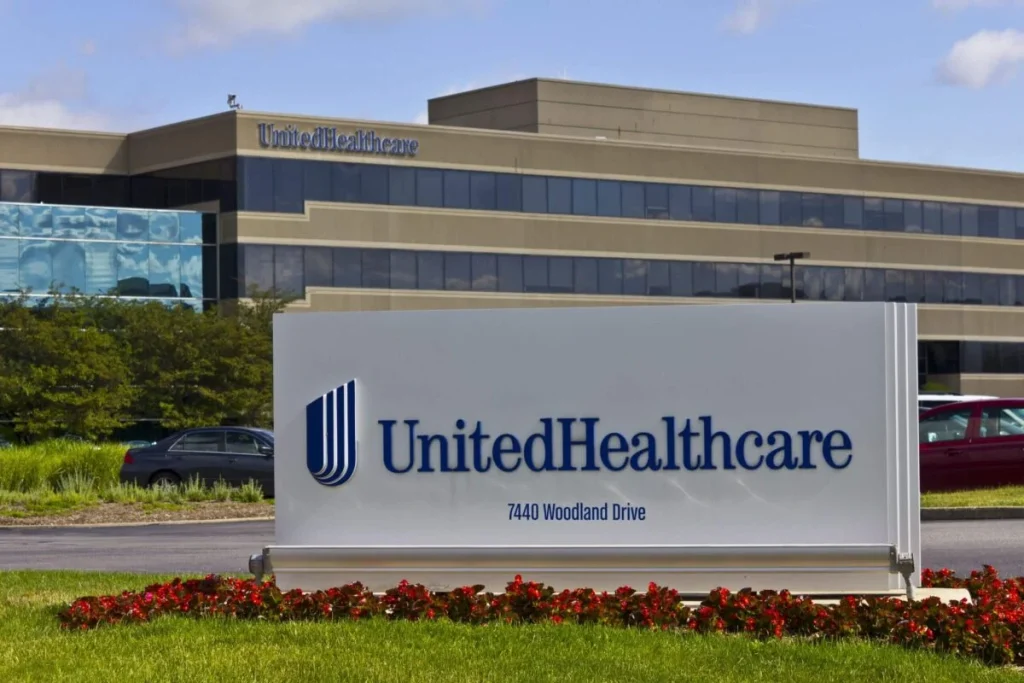Investing in the Future: A Deep Dive into UnitedHealth Group Incorporated Stock Performance and Trends

In an era where healthcare innovation intersects with financial opportunity, UnitedHealth Group Incorporated stands out as a compelling option for investors looking to secure their future. With a robust portfolio that encompasses a myriad of healthcare services and technologies, the company has consistently demonstrated resilience and adaptability in a rapidly evolving industry. As we delve into UnitedHealth’s stock performance, it’s essential to examine the underlying trends that shape its trajectory—ranging from policy shifts to advancements in telehealth.
This article will provide an insightful analysis of the company’s financial metrics, recent market movements, and predictions for future growth, equipping you with the knowledge needed to make informed investment decisions. Join us as we explore the potential of UnitedHealth Group, a leader at the forefront of the healthcare revolution, and discover whether this stock is a worthy addition to your investment portfolio.
Overview of UnitedHealth Group Incorporated (UNH)
UnitedHealth Group is America’s largest healthcare company, operating through two core divisions:
UnitedHealthcare: Insures 48+ million members via Medicare Advantage, employer plans, and Medicaid.
Optum: Provides health services (technology, pharmacy benefits, clinics) generating over half of UNH’s profits.
This vertically integrated model creates massive synergies. Optum serves UnitedHealthcare members while selling solutions to external clients. For example, OptumRx processes 1.2 billion prescriptions yearly, making it a top-3 U.S. pharmacy benefit manager (PBM)。
UNH’s scale is unmatched. The company earned $372B revenue in 2023 — larger than next 5 rivals combined. Furthermore, it operates in all 50 states, balancing commercial, government, and international segments.
Historical Stock Performance Analysis
UNH consistently crushed the market over decades:
10-Year Return: +375% (vs. S&P 500’s +158%)
Dividend Growth: Raised payout 14 straight years, with 16% CAGR since 2010
Crisis Resilience: Gained 25% during 2022 bear market while S&P fell 19%
However, 2024 volatility hit hard due to the Change Healthcare cyberattack and Medicare Advantage rate concerns. Shares dipped 15% in Q1 — a rare underperformance. Still, long-term trends show UNH recovers fast from setbacks.
Key Financial Metrics and Ratios
Latest Fiscal Year (2023) & Q1 2024 Highlights
| Metric | Performance | Sector Rank |
|---|---|---|
| Revenue | $372B (+15% YoY) | #1 |
| Net Income | $22.4B | #1 |
| Operating Margin | 8.9% | Top 5% |
| ROE | 26.3% | Top 10% |
| Debt-to-Equity | 0.69 | Low Risk |
Crucially, free cash flow hit $29B in 2023, funding dividends, buybacks, and Optum acquisitions.
Factors Influencing Stock Performance
Catalysts:
Medicare Advantage enrollment growth (5% annual pace)
Optum’s profit margins expanding to 8.5%+
Cyberattack recovery progress
Headwinds:
CMS reimbursement rate cuts
Political scrutiny of PBMs/insurers
Medical cost inflation (up 7% in Q1)
Notably, Optum now drives most growth. Its 2023 revenue jumped 24% — double UnitedHealthcare’s pace.
Recent Trends in Healthcare Stocks
Healthcare faces three major shifts favoring UNH:
Value-Based Care Acceleration: Optum’s clinics profit by keeping patients healthy, not billing per service.
Government Business Growth: Medicare Advantage now covers 33M Americans (+7% yearly)。
Vertical Integration Wave: Rivals copy UNH’s insurer-provider model (e.g., CVS-Aetna)。
Meanwhile, GLP-1 weight-loss drugs pressure insurers short-term but may lower long-term costs — a potential UNH tailwind.
Analyst Ratings and Predictions
Consensus: 22 “Buy,” 7 “Hold,” 0 “Sell” (TipRanks)
Price Targets: 580-610 (15-20% upside from $515)
2025 EPS Forecast: $31.50/share (+15% vs. 2024)
Key Analyst Views:
“Cyberattack headwinds are temporary. Optum’s tech moat and Medicare scale create long-term pricing power.” – Goldman Sachs (Buy, $600 PT)
“Medical cost concerns are overblown. UNH guides medical loss ratio under 84% for 2024.” – JPMorgan
Risks and Challenges for Investors
Regulatory Risks: DOJ antitrust probes into Optum’s physician acquisitions.
Medicare Advantage Cuts: 0.2% 2025 rate reduction pressures margins.
Cyberattack Fallout: $1.6B+ breach costs, plus reputation damage.
Medical Inflation: Hospital labor costs rose 8% in 2023.
However, UNH’s 85% commercial contract renewal rate and $9B litigation reserve provide shock absorbers.
Investment Strategies for UnitedHealth Group Stock
For Growth Investors:
Buy 50% now, 50% if dips below $500
Target 625 by 2026 EPS (30 × 21 P/E)
For Income Investors:
Hold for 1.5% yield + 15% dividend growth
Reinvest dividends automatically
Caution Areas:
Hedge with short-term puts during political debates
Limit to 5% of portfolio due to policy risk
Conclusion: Is UnitedHealth Group Incorporated Stock a Good Investment?
Bull Case:
Leader in $4T U.S. healthcare market
Optum’s 24% growth outpaces sector
15%+ EPS growth forecast through 2028
Dividend Aristocrat with low payout ratio
Bear Case:
Regulatory overhangs persist
Interest rates pressure P/E multiples
Verdict: STRONG BUY for long-term investors. Current dip offers entry before Optum tech/AI advantages accelerate.
Price Target: $600/share (18% upside) within 12-18 months.